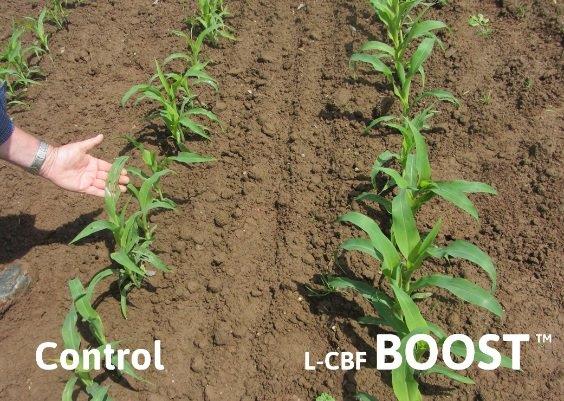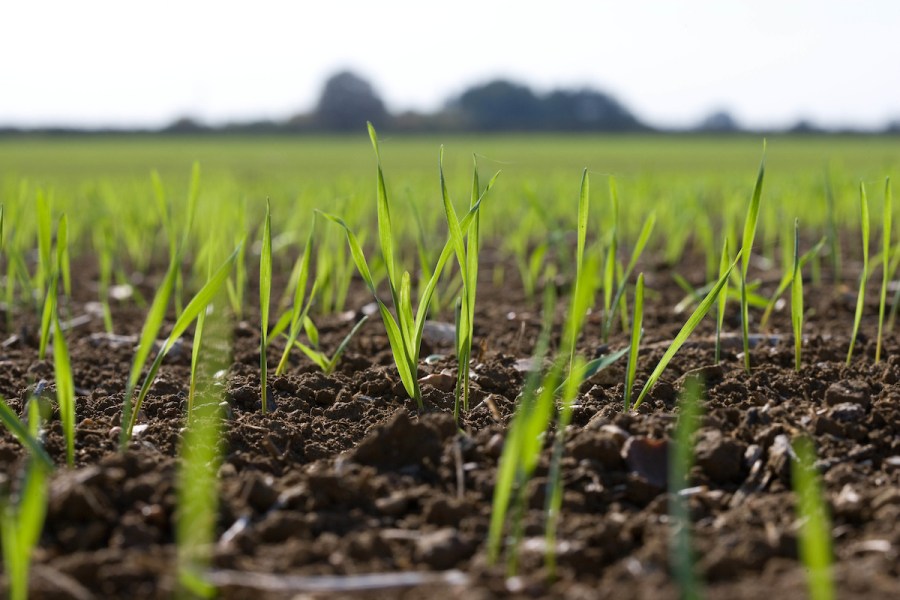Soil health and nutrition is a hot topic in farming at present, with many political debates suggesting that caring for soils could imminently become an integral part of UK agriculture.
As a result, biological products, that have a proven impact on food soil health, are enjoying a resurgence in interest.
CPM spoke to one firm who believe their product L-CBF Boost can influence crop yields, quality and overall plant health.
By Charlotte Cunningham.
While we all know we need to put a greater focus on ensuring soil health, the best way of doing so can be rather confusing.

It seems that many leading firms have some form of biological offering that promises to boost yield and promote healthy plants, but do they actually work? And why could they be so important for growers to optimise?
With the aim of feeding soil biology and enhancing plant nutrient availability, American firm, QLF have created a range of liquid carbon based fertilisers (L-CBF) which are made up of a combination of balanced crop nutrients with complex carbon sources.
“Effectively, L-CBF products provide a growth boost — a boost in growth for the microbial population in the soil to directly support healthy and productive soils,” explains the firm’s George Hepburn.
Along with supplying a critical form of readily available carbon as sucrose, L-CBF products provide a balanced nutritional package specific to the sustainability and longevity of highly productive soils, he adds.
Soil expert, George Hepburn has been advising farmers for over 12 years and says there is real credibility in using biological carbon products to feed the microbes and fungi. “I have seen biological farming go from muck and mystery to mainstream agriculture, but there is still much more for us to understand about the soil and more importantly the life within it.
“While working with quality proven carbon-based products for the past few years I have seen the results of extensive trials and farm use to improve the crops in the US, UK and EU.”
Tried and tested
Tested on millions of ha across the UK, EU and US, L-CBF Boost is a product within the range that has proved to be particularly effective, says George. “L-CBF Boost feeds the soil biology, including microbes and fungi. As a result, yield, health and quality improvements are seen.”
Trials have shown an increase of up to and over 10% in some situations, across a variety of cropping situations. “With a break-even yield increase of approximately 1%, even a slight improvement in the yield will see a return for growers,” he adds.
So how exactly does it work and why is feeding the soil so important? “When you have the correct soil structure — which I am seeing more frequently as an increasing number of farmers do less and less tillage — the next job is to feed the soil, or more importantly the microbes and fungi.
“FYM, compost, lime, cover crops, green manures and digestate are good fertilisers, but they do need some energy to work at their best.
“Plants do this naturally by exuding carbohydrates, simple sugars, fatty acids and enzymes out through the roots to feed the microbes and we can mimic this by applying similar substances to the soil — for example, L-CBF Boost.”
Feeding bacteria
Using L-CBF Boost as part of your system makes a big difference, adds George. “Not only are there various types of sugar, which is ideal for feeding the bacteria, there is also a more complex food added for both microbes and fungi.”
L-CBF Boost has also been seen to reduce scorch, increase efficacy of fertiliser, reduce glyphosate residues and works well in all soil types, he adds. “There is also a Soil Association approved organic variant available called TerraFed.”
As well as impacting on yield, the product is also claimed to have an effect on key quality indicators. “We’ve seen improvements in starch and ME in maize, protein in cereals and increased tuber numbers with less blight in potatoes.
“More resilient and earlier emergence has also been noted when applied at drilling — winter or spring).”
Carbon collecting
With carbon sequestration a buzzword in agriculture at the moment, George believes liquid feeds could also play a significant role in increasing carbon reserves. “The energised, increased presence of microbes have the ability to improve your soil structure by speeding up the breakdown of harvest residues and cover crops and turning this into organic matter — effectively creating your own carbon bank.”
As well as this, improvements to general plant health and vigour could result in reduced fungicide inputs, which could in turn help to reduce overall carbon emissions, he adds.
“I believe that the future of farming is biological not chemical, and over the next 10 years using carbon with inputs will become a standard procedure.
“I’ve seen first hand with L-CBF Boost improved efficiencies and efficacies of fertiliser and fungicide, better conversion of residue to OM and improved breakdown of chemical residues (e.g. glyphosate), which I think could push farmers and policy makers down this route.”
Research, research, research
For those thinking about including such a product into their management programme, George advises carrying out thorough research before opting for a certain brand or product. “Do be aware that there are many types of carbon products on the market, many with no trial data and others are very expensive.
“Some of these are not suitable for this type of application and a lack of consistent trial data over the years puts a question mark over their benefits.
“L-CBF Boost has been developed specifically for this job it is a stable product and under constant review and in my opinion has all the boxes ticked.
“Make sure you ask for independent and farm trial data and always look for a long and good track record of results, and farmers that are using it that you can speak to.”
information, visit: https://qlfagronomy.co.uk/products/l-cbf-boost/




